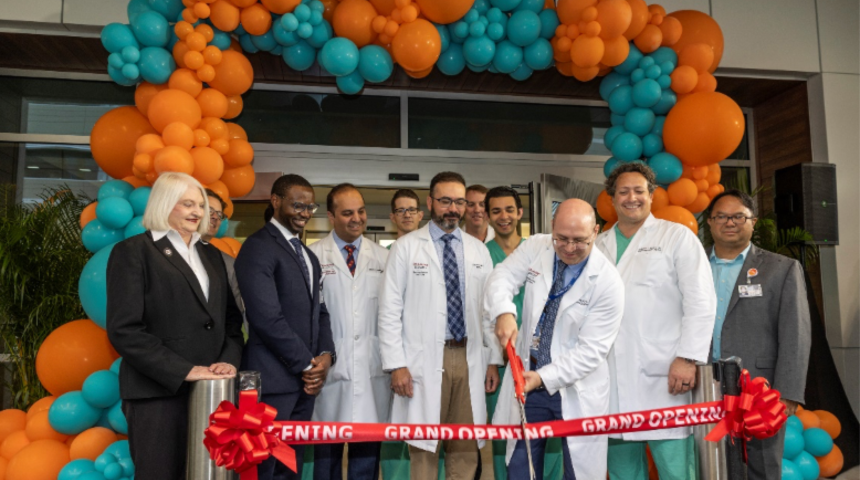Imagine walking down the street and a cool breeze brushes your face. For most of us, that might feel refreshing, but if you have trigeminal neuralgia, that sensation can trigger excruciating, stabbing or shock-like pain.
Trigeminal neuralgia (TN), also called tic douloureux, is a chronic pain condition associated with the trigeminal nerve, which brings sensory information from the face and jaw to the brain. According to the National Organization for Rare Disorders (NORD), trigeminal neuralgia affects women slightly more than men, and adults 50 years or older more than those younger. About 10,000 to 15,000 new cases of TN occur annually in the United States.
Causes of TN
TN is the result of abnormal conduction through the trigeminal nerve - one of 12 pairs of nerves originating from the brain and brainstem. Usually, the trigeminal nerve carries information from the face to the brain, but sometimes a vein or artery presses against the nerve and that ongoing pulsating can damage the architecture of the nerve, wearing away its protective coating and resulting in pain. Other conditions, such as tumors compressing the nerve, multiple sclerosis or an injury to the nerve (i.e. through a dental procedure), could trigger the condition.
Symptoms of Trigeminal Neuralgia
Because the trigeminal nerve affects so many parts of the face, the location of your symptoms—and their triggers may vary. Typical symptoms include:
- Severe, shooting or jabbing, shock-like pain
- Pain when you touch your face
- Pain when chewing
- Pain when speaking
- Pain when brushing teeth
- Pain in the cheek, jaw, teeth, gums or lips
- Pain on one side of the face
- An aching or burning feeling that occurs before full-fledged pain begins
- Periods of pain that last a few seconds to a few minutes
- Intermittent pain, lasting weeks or months, then going away
Conditions can progress over time, and because of the unpredictability of the sensations of pain, it can take both a mental and physical toll.
Accurately diagnosing trigeminal neuralgia is important, since other conditions may have similar symptoms. Doctors will review your history, listen to your description of symptoms and perform an exam. You will probably have an MRI (magnetic resonance imaging) scan to rule out multiple sclerosis or a tumor. The MRI may be able to show if a blood vessel is compressing a nerve.
Treating Trigeminal Neuralgia
Doctors treat this nerve condition in four ways:
1. Medication. This is the least invasive type of treatment. Doctors may prescribe an anti-seizure drug such as Tegretol, which may be all that’s needed. Tegretol is best known as a treatment for epilepsy, and although trigeminal neuralgia is not related to epilepsy, Tegretol also is effective in treating nerve pain.
Many people have an excellent response to the medicine, but over time, that response may fade and the symptoms become drug resistant. If that happens, and an increased dosage of medicine results in negative side effects such as dizziness or mental fogginess, you may need a more expansive type of treatment.
2. Minimally invasive procedures such as stereotactic radiosurgery, which directs focused high levels of radiation to the nerve to form a lesion that disrupts the pain signals to the brain, can offer pain relief within weeks. This is a good option for people who cannot tolerate surgery, and it does not require an overnight hospital stay. However, most people who have these procedures have a recurrence of symptoms within three or four years, if not sooner.
3. Percutaneous rhizotomy techniques are another option that offer quick relief of the pain while avoiding surgery. The procedure involves direct lesioning of the nerve by accessing it where it exits the skull with a needle entering through the cheek. This is also a good option for people who may not tolerate surgery, as it requires neither generalized anesthesia nor an overnight stay. However, there is substantial risk of recurrence of symptoms.
4. Surgery is the most invasive procedure, but the most long-lasting. Microvascular decompression is a surgery done under anesthesia, during which the artery or vein that is compressing the trigeminal nerve is moved. About half of the people with this surgery will have a recurrence of pain in 10 to 15 years. Other variations of this surgery, such as a neurectomy, which cuts part of the nerve, or internal neurolysis, which separates the nerve fibers, are also options.
Trigeminal neuralgia can be a lonely, frustrating condition. The Trigeminal Neuralgia Support Group at ORMC can help provide the community and resources to help. For more information, please contact us.











